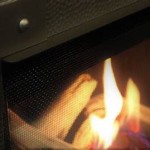Freestanding Gas Fireplace Reviews: A Comprehensive Guide
Freestanding gas fireplaces offer a blend of aesthetic appeal, convenience, and heating efficiency, making them a popular choice for homeowners seeking supplemental heat or a focal point for their living spaces. Unlike traditional wood-burning fireplaces, gas fireplaces eliminate the need for firewood, ash cleanup, and extensive venting systems. This article provides a detailed overview and review of freestanding gas fireplaces, examining key features, performance metrics, and maintenance considerations to assist potential buyers in making informed purchasing decisions.
The freestanding design allows for flexible placement within a room, as they are not constrained by existing fireplace structures. These units typically require a gas line connection and a venting system, although vent-free models are also available. The fuel options commonly include natural gas and propane, impacting the operating costs and installation requirements. Before selecting a freestanding gas fireplace, understanding the different types, features, and installation requirements is crucial.
Types of Freestanding Gas Fireplaces
Freestanding gas fireplaces can be categorized based on their venting system and appearance. The primary distinctions lie between direct vent, B-vent, and vent-free models, each offering varying levels of efficiency and installation complexity.
Direct Vent Fireplaces: These units are sealed combustion systems that draw air from outside the home for combustion and vent exhaust gases directly outside. The sealed system enhances safety and efficiency by preventing the depletion of indoor air and minimizing the risk of carbon monoxide leaks. Direct vent fireplaces are generally considered the safest and most efficient type, although they require professional installation due to the venting requirements. The vent pipe can be run horizontally through an exterior wall or vertically through the roof.
B-Vent Fireplaces: B-vent models utilize existing chimneys or require a designated B-vent pipe for exhaust. They draw combustion air from inside the home, requiring adequate ventilation to prevent oxygen depletion. B-vent fireplaces are less efficient than direct vent models due to the reliance on indoor air for combustion. They are generally less expensive to install if an existing chimney is available, but the overall operating costs may be higher.
Vent-Free Fireplaces: Also known as ventless fireplaces, these units do not require an external venting system. They burn gas cleanly enough that the exhaust gases are released directly into the room. Vent-free fireplaces are often the easiest to install, as they only require a gas line connection. However, they are subject to certain restrictions and regulations due to concerns about indoor air quality and potential carbon monoxide buildup. Many jurisdictions have banned or restricted the use of vent-free fireplaces. Additionally, they tend to produce moisture, which can lead to mold growth in poorly ventilated areas.
Beyond the venting types, freestanding gas fireplaces come in various styles, including traditional stove designs, contemporary linear models, and more modern enclosures. Material choices often include cast iron, steel, and ceramic glass, each offering different aesthetic and thermal properties. Some models feature realistic logs, while others use decorative glass or stones for a more modern appearance.
Key Features and Performance Metrics
Evaluating the features and performance metrics of a freestanding gas fireplace is crucial for determining its suitability for specific heating needs and aesthetic preferences. Factors such as heating capacity, energy efficiency, ignition systems, and safety features should be carefully considered.
Heating Capacity: The heating capacity of a gas fireplace is typically measured in British thermal units (BTUs). A higher BTU rating indicates a greater heating output and ability to warm larger spaces. Factors such as room size, insulation levels, and climate should be considered when determining the appropriate BTU rating. Smaller units might offer 20,000 BTU, while larger, more powerful models can reach upwards of 40,000 BTU or more. Choosing a unit that is appropriately sized for the space can prevent overheating or insufficient heating.
Energy Efficiency: The energy efficiency of a gas fireplace is typically expressed as an Annual Fuel Utilization Efficiency (AFUE) rating. This percentage indicates the amount of fuel that is converted into usable heat. Direct vent fireplaces generally have higher AFUE ratings compared to B-vent and vent-free models. A higher AFUE rating translates to lower operating costs. Look for Energy Star-certified models for optimal energy performance.
Ignition Systems: Gas fireplaces utilize different ignition systems, including standing pilot, electronic ignition, and intermittent pilot ignition (IPI). Standing pilot systems have a continuously burning pilot light, consuming gas even when the fireplace is not in use. Electronic ignition systems use an electronic spark to ignite the gas, eliminating the need for a standing pilot and conserving energy. IPI systems only activate the pilot light when the fireplace is turned on. Electronic ignition and IPI systems are generally more energy-efficient than standing pilot systems.
Safety Features: Safety features are paramount in gas fireplaces. Look for features such as oxygen depletion sensors (ODS), which automatically shut off the gas supply if oxygen levels in the room become too low. Child safety locks can prevent unauthorized operation. Thermostats and remote controls can offer convenience and allow for precise temperature control. Models with cool-touch glass can reduce the risk of burns. Carbon monoxide detectors are strongly recommended in homes with gas appliances.
Aesthetics: Aside from its functional features, the aesthetics of a gas fireplace are important. The appearance of the flames, the design of the firebox, and the overall style of the unit should complement the room's décor. Options such as adjustable flame height, realistic log sets, and decorative media can enhance the visual appeal of the fireplace. Some models also come with options for custom surrounds and mantels to further personalize the look. Fireplace inserts often attempt to mimic the look of a real wood burning fire, but the appearance can vary significantly depending on the model.
Remote Control and Thermostat: These convenience features provide greater control over the fireplace operation. A remote control allows users to adjust the flame height, heat output, and on/off settings from a distance. A built-in thermostat maintains a consistent room temperature and prevents overheating which can improve the user experience and energy efficiency.
Installation and Maintenance Considerations
Proper installation and regular maintenance are essential for the safe and efficient operation of a freestanding gas fireplace. Installation requirements vary depending on the venting system and local building codes. Maintenance tasks include cleaning the glass, inspecting the venting system, and checking the burner assembly.
Installation: The installation of a freestanding gas fireplace should ideally be performed by a qualified professional. Direct vent and B-vent models require precise venting configurations to ensure proper exhaust. Vent-free models may require specific clearance requirements and adherence to local regulations. Proper gas line connections are crucial to prevent leaks and ensure safe operation. Permits are often required for gas appliance installations. Incorrectly installed gas fireplaces can pose safety hazards, including gas leaks, carbon monoxide poisoning, and fires.
Venting: Regular vent inspection is crucial. Annually, it's recommended to look for any blockage or corrosion. Birds or other animals may nest in the vent, causing serious problems. Proper venting ensures the safe removal of combustion products and efficient operation. For direct vent systems, inspect the termination caps to ensure they are free of debris.
Cleaning: Cleaning the glass is an important part of maintaining the aesthetic appeal and performance of the fireplace. Use a non-abrasive glass cleaner specifically designed for gas fireplaces to remove soot and buildup. Regularly inspect the burner assembly for debris and dust, which can affect the flame pattern and efficiency. Cleaning frequency depends on the usage of the fireplace and the quality of the fuel.
Maintenance: A professional inspection and maintenance service should be performed annually. This service typically includes cleaning the burner assembly, inspecting the gas line connections, checking the venting system, and testing the safety features. A qualified technician can identify potential problems early on and perform necessary repairs to prevent costly breakdowns and ensure safe operation. Professional servicing often includes checking the gas pressure and adjusting the air-to-fuel ratio for optimal combustion.
Cost: The cost of a freestanding gas fireplace varies depending on factors such as size, features, efficiency, and brand. Vent-free models are typically the least expensive, followed by B-vent and direct vent models. Installation costs can also vary significantly, depending on the venting requirements and the complexity of the installation. Plan to factor in the operating costs, which include the cost of natural gas or propane and the cost of electricity for the ignition system or fan.
Gas Fuel Choice: Whether the fireplace is fueled by natural gas or propane can greatly affect the installation and operating costs. Natural gas is often a cheaper fuel source but requires a connection to a natural gas line. Propane, on the other hand, requires a propane tank on the property and regular refills. Propane is also more expensive than natural gas in many areas. Check local rates to determine which fuel source is more economical.
In summary, freestanding gas fireplaces offer a convenient and aesthetically pleasing heating solution for many homes. Selecting the right model requires careful evaluation of venting options, heating capacity, safety features, and installation requirements. Regular maintenance performed by a qualified technician is crucial to ensure safe and efficient operation.

Procom Ventless Dual Fuel Stove 25 000 Btu 170097 The Home Depot

Freestanding Gas Fireplaces Fergus Fireplace

Reviews For Pleasant Hearth 23 5 In Compact 20 000 Btu Vent Free Dual Fuel Gas Stove Pg 1 The Home Depot

Escea Dfs730 Freestanding Gas Fireplace Climatise

Kingsman Fdv200s Free Standing Direct Vent Gas Heating Stove Millivolt Pilot
Heat Glo Supreme Freestanding Gas Fireplace Fireplaces Com

Marquis Vantage Free Standing Direct Vent Gas Stove Bay View North Woods Grills

Benefits Popularity Of Gas Fireplaces Stoves And Fireplace Inserts

Free Standing Gas Fireplace Stoves For 30 On Now

Safire Baiona Freestanding Gas Fireplace Gc Fires
Related Posts








